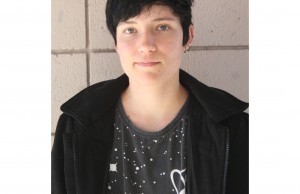Athletic amendment addresses transgender students
Due to a recent athletic amendment, transgender students in all CVUSD schools are now allowed to compete on the sports team of the gender which they identify with.
“If somebody feels comfortable with who they are, and can go out for the team of a (sport) they love, and they can make friends with their team mates and have that social support, then they’re less likely to feel depressive due to who they are,” said Alex*, a genderfluid senior who wishes to remain anonymous.
However, Jorge Ostrovsky, boys varsity volleyball coach, worries that such a system would be unfair to other competing athletes and teams.
“Would that be fair to all the naturally born women who are playing on the team who no longer have a position because they have been replaced by a six foot four or six foot five (biological) male … (who) is playing now on a seven foot tall net as opposed to a normally eight foot tall (boys net)?” Ostrovsky asked.
Ostrovsky further explained how transgender athletes could be an issue in higher level athletics. He used the example of male olympic athlete turned female Caitlin Jenner.
Had she competed as a woman, “(she) would have been the Olympic record holder for every event she competed in,” Ostrovsky said.
Alex disagrees with this idea, believing that at the high school level it is more beneficial for transgender students to participate on the team of the gender they identify as.
“I know that there can be some additional physiological concerns for sports, but at the high school level, I think that it’s just basically a personal affair, and the school shouldn’t stop anyone from pursuing their own dreams … that’s the point of school, we’re supposed to grow,” Alex said.

Student Involvement – Emmett Vanderwier, junior and vice president of the Gay Straight Alliance, has identified as transgender through his high school career. Samantha Meyer/Prowler
Athletics director Kelly Welch, explained that CIF policy already allows for transgender students to compete on the team of their gender identity, and that the change in district policy is aligning the school with CIF.
She continued to describe other changes in the school, such as remodeling the locker rooms in order to accommodate the wishes of more students.
“(These new locker spaces) provide privacy changing areas for students, for any student that wishes regardless of what gender they identify with … They kind of look like department store dressing rooms, they will be off to the side in both of the locker rooms.”
Emmett Vanderwier, a transgender junior, supports the addition of more accommodations for transgender students and stresses its importance.
“Putting a trans kid who, like myself, identifies as male, who is FTM (female to male), … in the girls locker room is pretty much the equivalent of putting a boy in the girls locker room.” Vanderwier said.
Despite his concerns about the athletic fairness of transgender athletes, Ostrovsky would accommodate a transgender athlete who tries out for the boys volleyball team.
“Ultimately it is, can he make the team, can he compete, and are you as good as the top 12 guys on the team,” Ostrovsky said.
Welch is confident the school will be able to respect the gender identities of all students.
“We want to meet the needs of the student wherever that student may be to the best of our ability, and if the rules are allowing that student to participate on a female or a male team depending on their gender identity, then we will honor that,” Welch said.
*names have been changed for privacy



